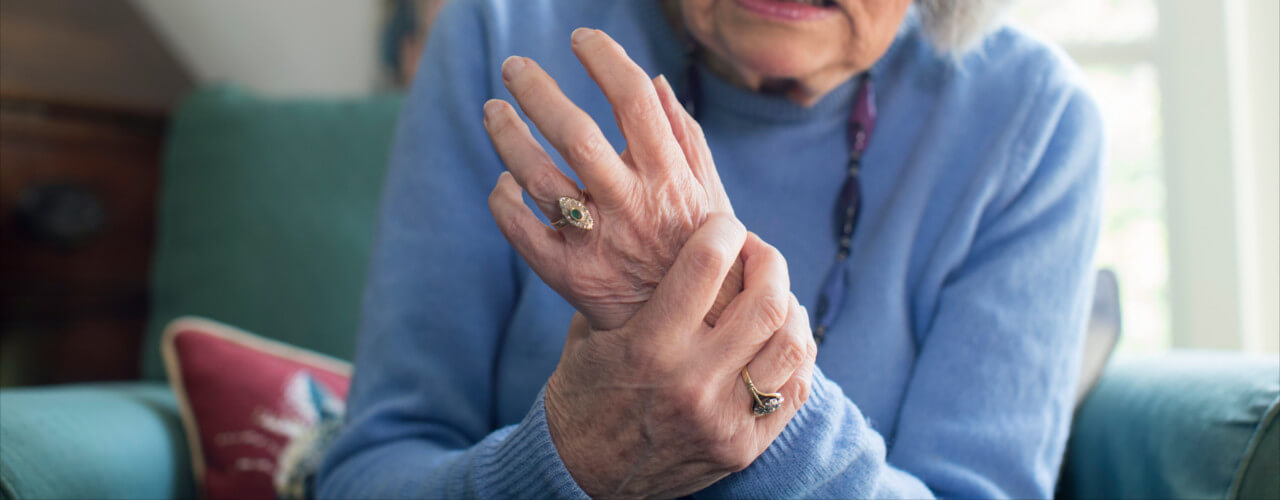Do your joints feel stiff and sore when you wake up in the morning, or even after you sit down for a few hours? Those sore joints could be arthritis, which affects almost 54 million Americans. The good news is that one of the most effective, proven treatments to relieve the symptoms of arthritis is getting regular physical exercise. This can be improved on even further by working directly with a physical therapist, who can help you create a tailor-made exercise plan to relieve those achy joints. Want to know more? Contact us to today to schedule an appointment and talk about how physical therapy can be used to treat arthritis.
What is Arthritis?
Arthritis is an inflamed and painful joint. It can attack a single joint in the body, such as a knee or a hip. It can also affect multiple joints as a person ages. You probably know an older person who has arthritis that affects several joints in their hands.
Osteoarthritis is the most common form of arthritis. This condition is basically caused by “wear and tear” on the joints, which we’ll explain in more detail below. Rheumatoid arthritis is another type of arthritis, which is an autoimmune condition. It’s much more common in women than in men. Both types can benefit from regular physical therapy and exercise.
Here are the main symptoms that a person experiences with arthritis:
- Stiff, sore joint (or joints), especially in the morning; the pain is lessened after about 30 minutes
- Pain during activity that goes away when you rest
- “Noisy joints” – You hear all sorts of snaps, crackles and pops when bending the affected joint
- Joint is sensitive or painful to touch
With rheumatoid arthritis, joints on both sides of the body can be affected at the same time. People with this condition can also suffer from fatigue and loss of joint use.
Causes of Arthritis
Osteoarthritis, as we mentioned above, is caused by “wear and tear” on a joint. Our bones are covered with cartilage to protect them. Constant overuse of a joint can cause that cartilage to break down, which eventually results in bones “grinding” together at the joint. This happens to all of us to a certain extent as we age, but there are some additional factors that can contribute to arthritis:
- Injury: If you sustain an injury to a weight-bearing joint, especially a knee or a hip, it can lead to osteoarthritis later in life — even if you fully recover at the time.
- Repetitive Jobs: An occupation that requires a lot of repetitive motion, such as bending, twisting, squatting or kneeling, can break down cartilage and lead to early onset of arthritis. Construction workers, flooring installers and even child care workers (who bend over to pick up small children frequently) will often develop arthritis as a result of their careers.
- Athletics: Athletes who put a lot of repetitive strain on their joints are also more prone to osteoarthritis, such as baseball pitchers, ballet dancers, and football players.
- Weight: Being overweight can lead to arthritis as well because it puts extra strain on weight-bearing joints.
While those are the causes of osteoarthritis, doctors don’t know as much about rheumatoid arthritis because it is an autoimmune condition. Its cause is believed to be a combination of genetics, environmental and hormonal factors.
Physical Therapy for Arthritis
Getting regular physical exercise is the number one approach to dealing with the pain of arthritis, according to the Arthritis Foundation. But where should you begin? That’s where working with a physical therapist can help!
A licensed physical therapist will be able to recommend specific exercises for your age range, ability level and arthritis symptoms. Hands-on physical therapy (known as “manual therapy”) can be used to help improve the range of motion in the affected joints. Your therapist can teach you the types of strengthening and aerobic exercises that will best benefit your condition. You’ll also be given an at-home exercise program to follow. A physical therapist can even teach you about changes to make in your home or office that will improve your posture and help alleviate your arthritis symptoms.
Don’t suffer needlessly with arthritis by thinking it is “just a part of life.” Physical therapy can help! Contact us today at Oviedo and Orlando, FL centers to schedule an appointment with a physical therapist and start getting that arthritis pain under control.






